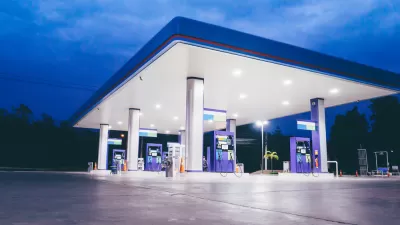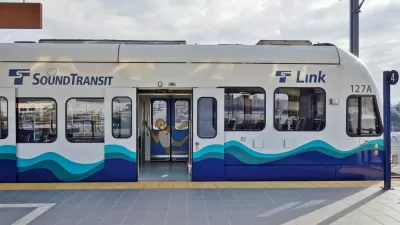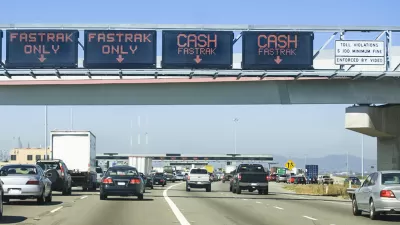National Journal engaged several experts on the state of transportation infrastructure. Both Ken Orski and Rep. Earl Blumenhauer examine different aspects of the 'Infrastructure Deficit". What can we expect to see in the next four years?
Innovations Briefs publisher, Ken Orski assesses where transportation infrastructure ranks not only among the candidates but also with the public. In short, there is no infrastructure crisis in the public's eyes - so don't expect to see additional expenditures for new investment other than from the increased Transportation Infrastructure Finance and Innovation Act (TIFIA) Program funding.
"The absence of transportation in the political dialogue has surprised and disappointed transportation advocates", he writes.
Orski refers to a Oct. 31, 2011 Washington Post opinion by Charles Lane that shows that "people see no signs of 'crumbling infrastructure.' They trust their own eyes more than they trust the unverified claims of the experts ---and what they see is highways and transit networks that are well maintained and functioning smoothly and reliably in most of the places most of the time."
"As one senior congressional aide confided to us, "I don't see our constituents lobbying to raise the gas tax in order to spend more money on transportation."
"The bottom line: regardless of the outcome of the November elections, do not expect a boost in federal transportation spending. Instead, look for a shift from funding to financing ---shift fueled by vastly expanded TIFIA lending authority (by more than 600 percent, from $122 million in FY 2012 to $750 million in FY 2013) and by large amounts of accumulated equity in pension funds and private infrastructure investment funds, numbering some 140 at the latest count."
In the same compilation of responses to the question on "Scaling Back on Infrastructure" posed by correspondent Fawn Johnson, Oregon Rep. Earl Blumenauer paints a more optimistic picture.
"Unlike the contentious issues that dominate the airwaves like taxation, defense, and healthcare, investments in rebuilding and renewing America's infrastructure have broad, bipartisan support with the general public and, until recently, in Congress as well", Blumenauer writes.
While the Representative doesn't identify potential new sources of federal transportation funding, he takes note of the public's willingness to invest in transportation infrastructure for their communities.
"Communities across America are investing local resources in infrastructure, with more than 85% of local transportation ballot measures succeeding so far in 2012, according to the Center for Transportation Excellence."
Thanks to Ken Orski
FULL STORY: Transportation Infrastructure in the Post MAP-21 Era

Alabama: Trump Terminates Settlements for Black Communities Harmed By Raw Sewage
Trump deemed the landmark civil rights agreement “illegal DEI and environmental justice policy.”

Study: Maui’s Plan to Convert Vacation Rentals to Long-Term Housing Could Cause Nearly $1 Billion Economic Loss
The plan would reduce visitor accommodation by 25% resulting in 1,900 jobs lost.

Why Should We Subsidize Public Transportation?
Many public transit agencies face financial stress due to rising costs, declining fare revenue, and declining subsidies. Transit advocates must provide a strong business case for increasing public transit funding.

Wind Energy on the Rise Despite Federal Policy Reversal
The Trump administration is revoking federal support for renewable energy, but demand for new projects continues unabated.

Passengers Flock to Caltrain After Electrification
The new electric trains are running faster and more reliably, leading to strong ridership growth on the Bay Area rail system.

Texas Churches Rally Behind ‘Yes in God’s Back Yard’ Legislation
Religious leaders want the state to reduce zoning regulations to streamline leasing church-owned land to housing developers.
Urban Design for Planners 1: Software Tools
This six-course series explores essential urban design concepts using open source software and equips planners with the tools they need to participate fully in the urban design process.
Planning for Universal Design
Learn the tools for implementing Universal Design in planning regulations.
Caltrans
Smith Gee Studio
Institute for Housing and Urban Development Studies (IHS)
City of Grandview
Harvard GSD Executive Education
Toledo-Lucas County Plan Commissions
Salt Lake City
NYU Wagner Graduate School of Public Service





























